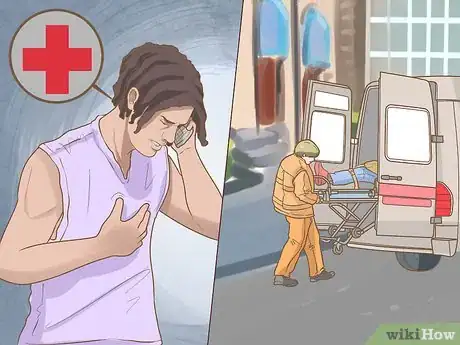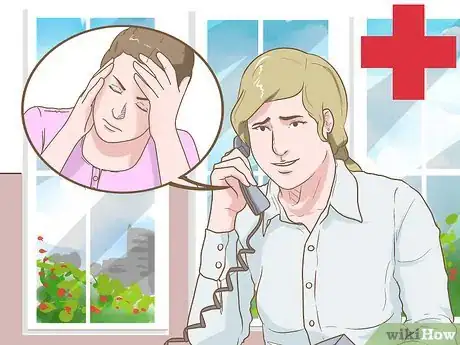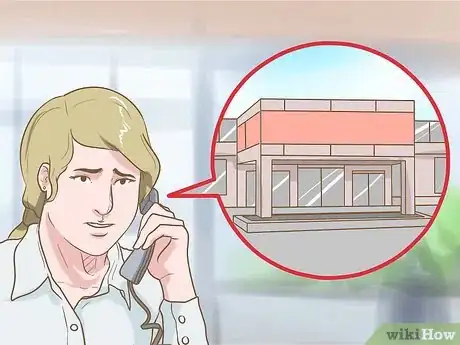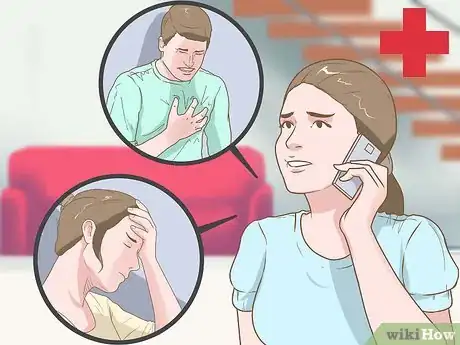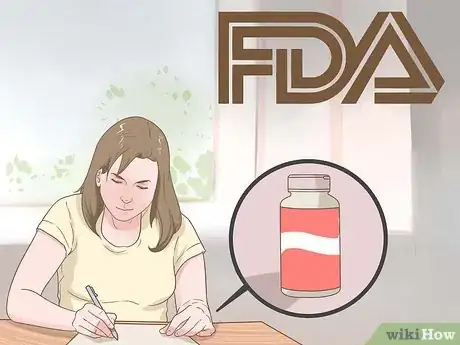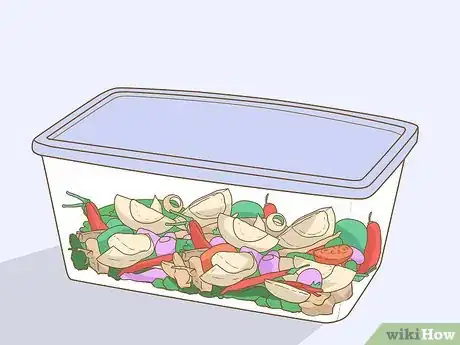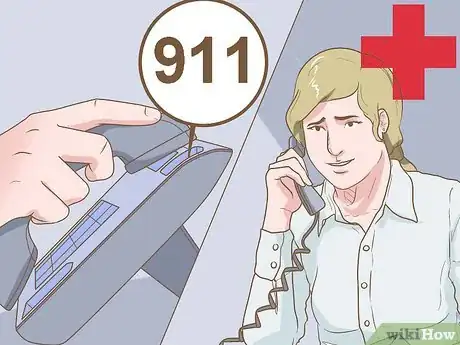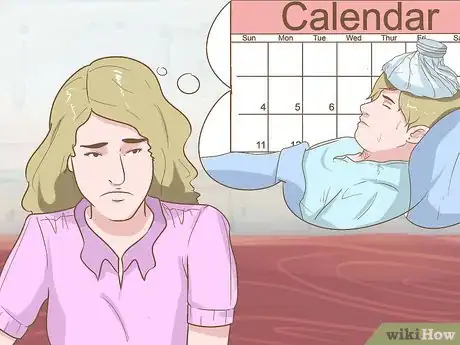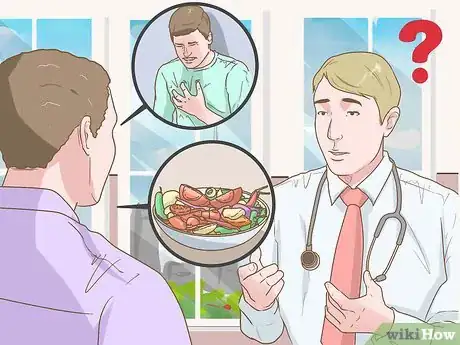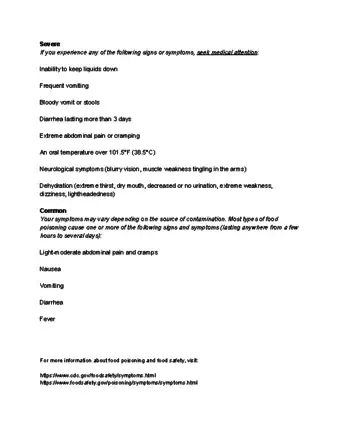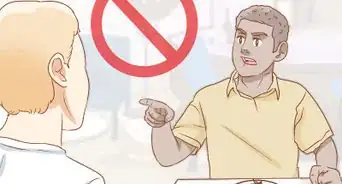This article was co-authored by wikiHow Staff. Our trained team of editors and researchers validate articles for accuracy and comprehensiveness. wikiHow's Content Management Team carefully monitors the work from our editorial staff to ensure that each article is backed by trusted research and meets our high quality standards.
There are 8 references cited in this article, which can be found at the bottom of the page.
wikiHow marks an article as reader-approved once it receives enough positive feedback. In this case, 81% of readers who voted found the article helpful, earning it our reader-approved status.
This article has been viewed 75,445 times.
Learn more...
Foodborne illness, also known food poisoning, happens when someone gets sick after eating contaminated food. Reporting suspected food poisoning is important in case multiple people have gotten sick from the same establishment.[1] If you suspect that you have been affected by food poisoning, follow the proper guidelines to report it.
Steps
Reporting Food Poison
-
1Contact the local health department. If you believe you got food poisoning from a restaurant or other food source in your community, you need to contact your local health department. Contacting the health department helps them keep track of places where contamination or foodborne outbreaks occur so they can investigate further.[2]
- In some states, doctors must report communicable diseases, such as foodborne disease outbreaks, to government agencies.[3]
-
2Decide the method of your complaint. Most areas offer two ways to report a foodborne illness. You can call the health department, or you can go to the health department’s website.
- If you call the health department, you will probably have a 10 to 15 minute interview. They will ask you an array of questions. Before you call, make sure you have all of your information ready. Be as specific as possible.
- If you prefer to fill out an online form, go to the community’s health department’s website. They may offer a printable form or a form you can submit online.
Advertisement -
3Explain your symptoms. When you report food poisoning, you often will have to state what your symptoms are. This helps public health officials in their investigations if they can find common symptoms or ailments. This also helps them be able to narrow down which foodborne disease may be afflicting people.[4]
- Include how long the symptoms lasted and when they started.
- Common symptoms of food poisoning are diarrhea and vomiting. Symptoms may also include abdominal cramps, nausea, fever, and fatigue. These symptoms may last one to seven days.
-
4Provide information about where you ate. When reporting food poisoning, you will have to give information about where you ate the food. This includes the name of the restaurant or grocery store and the address.
- You should also include the date and time you ate the food. This can help with the public health official’s investigation.
-
5Detail the foods you ate. One of the most important things you can do when you report food poisoning is to give the details about what you ate. Everything you ate is important, from appetizers, side dishes, main courses, and desserts. You should also include any dressings, condiments, or sauces you had. Include what you drank, too.[5]
- For example, you might say that you had two pieces of baked chicken with a side of french fries and a side salad with ranch dressing at 7:30 p.m.
-
6Include information about other people in your party. If you ate at the restaurant with other people, you may be required to provide information about them. You may need to state how many people were in your party or how many other people got sick from the meal. You may also have to talk about how many of those people live in the same household.[6]
-
7Include any medical details. If you went to the doctor, the doctor may have taken stool samples or run tests to determine what disease you had. If you know which foodborne illness you contracted, you can provide this information.[7]
- Include your doctor’s contact information in case the public health officer needs to contact the doctor.
-
8Write to the FDA. If you believe you have food poisoning due to a food that is regulated by the FDA that you purchased in a grocery store, you should contact the FDA. When you report a product to the FDA, you need to provide the names of the people affected and your details. If you were treated by a doctor, provide that information, too.[8]
- Include a description of the product, including codes or identifying marks on the label or container. State the problem with the product in detail.
- Provide the contact information for where the product was purchased, such as the store’s address and the date purchased.
- You should also report the food poisoning to the manufacturer.
- Don’t report restaurant food poisonings to the FDA.
-
9Keep any leftover food in a container. Some community health departments may wish to run tests on the suspect food. If you have any food left over, place it in a container, separate from the rest of your food. You don’t want anyone to eat it.
- Not all communities will want to examine the food, even if you have kept it.
Deciding If You Have Food Poisoning
-
1Visit your doctor. If you get food poisoning, it’s important for you to go see your doctor as soon as you can. Your doctor can determine if you do have food poisoning or another illness, if the food poisoning is mild or serious, and advise you on treatment.[9]
- If you have an emergency, call 911 or visit the emergency room.
-
2Understand that food poisoning may not show for a few days. Sometimes, food poisoning can take a few days to surface. Many people believe that food poisoning is due to the last meal they ate, but it may be from a meal eaten a day or two before. When reporting food poisoning, make sure to take into consideration everything you have eaten over the last couple of days.[10]
- Think about the other people in your home, or other people who ate meals with you. See if they got sick too and if they have similar symptoms.
-
3Be aware food poisoning is hard to locate. Though you should definitely report anything suspicious, it is very difficult for food poison to be pinned on a specific restaurant. Mainly, this is because the contaminated food has more than likely been thrown away and there may not be a way to medically confirm food poisoning.[11]
-
4Prepare to lodge your complaint. Before you report food poisoning, you must be prepared to answer any questions the health department or agency will ask you. Gather the following information:
- Type of establishment where the food poison occurred, such as fast food restaurant, chain, bar, or bakery
- Name of the establishment, along with the address and phone number.
- Date of exposure
- Time of exposure, as specific as possible, a.m. or p.m. at the least
- Symptoms, including details, dates, times, and duration
- Number of people in the party affected and not affected
- Detailed list of foods consumed at the restaurant
- Any medical treatment or tests your received
- Foods you consumed for 72 hours prior to getting sick
Signs of Food Poisoning
References
- ↑ http://www.foodsafety.gov/report/poisoning/
- ↑ http://www.foodsafety.gov/report/poisoning/index.html
- ↑ http://dhss.delaware.gov/dhss/dph/dpc/rptdisease.html
- ↑ http://health.mo.gov/safety/foodsafety/pdf/befoodsafefactsheet.pdf
- ↑ http://health.mo.gov/safety/foodsafety/pdf/befoodsafefactsheet.pdf
- ↑ http://www.health.ri.gov/food/about/illness/
- ↑ http://www.dailymail.co.uk/health/article-41650/How-complain-food-poisoning.html
- ↑ http://www.fda.gov/Safety/ReportaProblem/QuestionsandAnswersProblemReporting/default.htm
- ↑ http://www.foodsafety.gov/report/poisoning/index.html
About This Article
If you think you got food poisoning after eating at a restaurant and want to report it, contact your local health department by calling them or filling out a form on their website. Make sure you're ready to give them all of the details, like the date and time that you were at the restaurant, what food you ordered, what symptoms you experienced, and if you received any medical care. For more tips on how to report food poisoning from a restaurant, like why you should keep any leftovers, read on.
